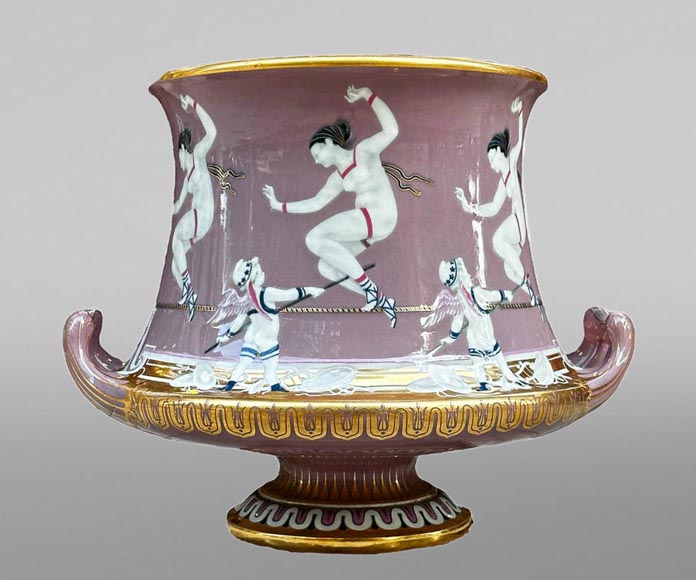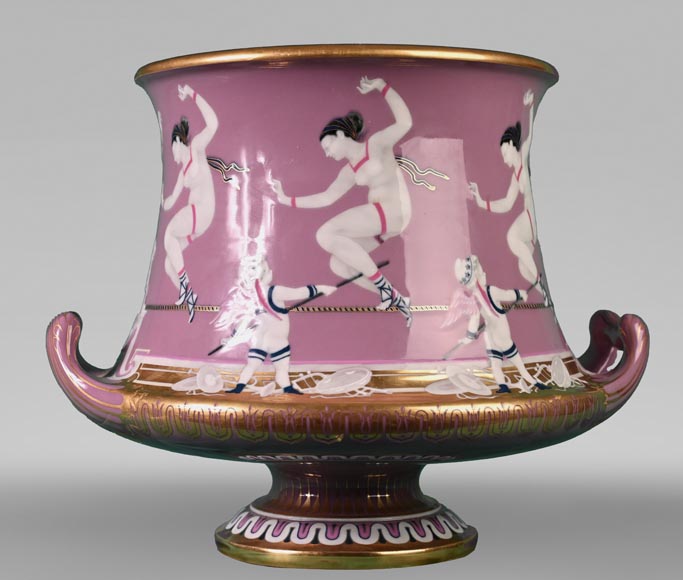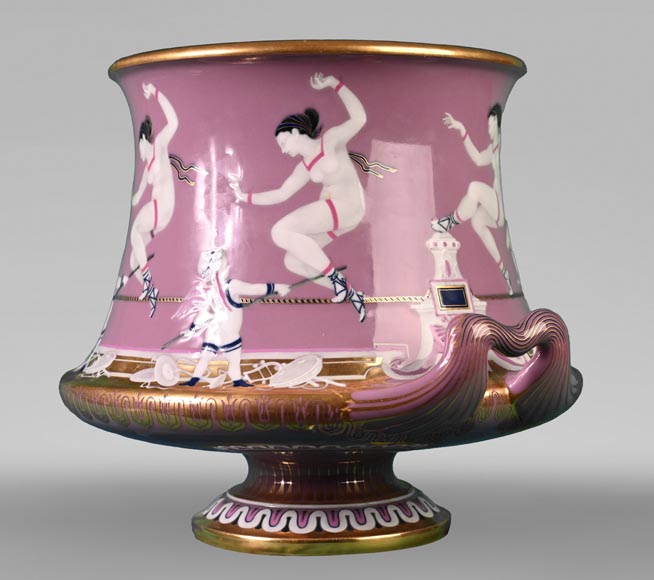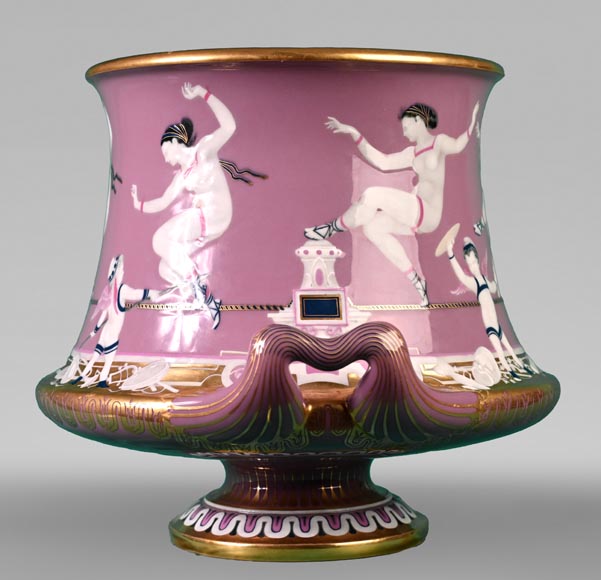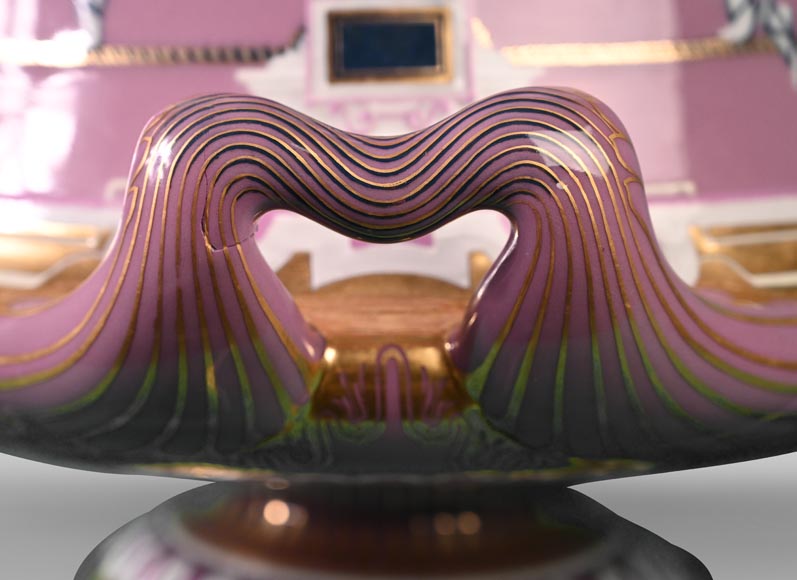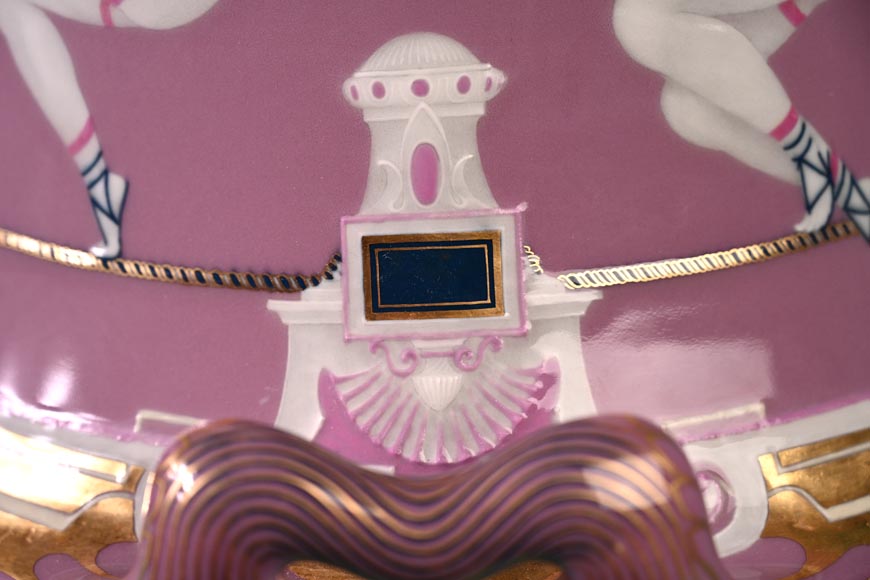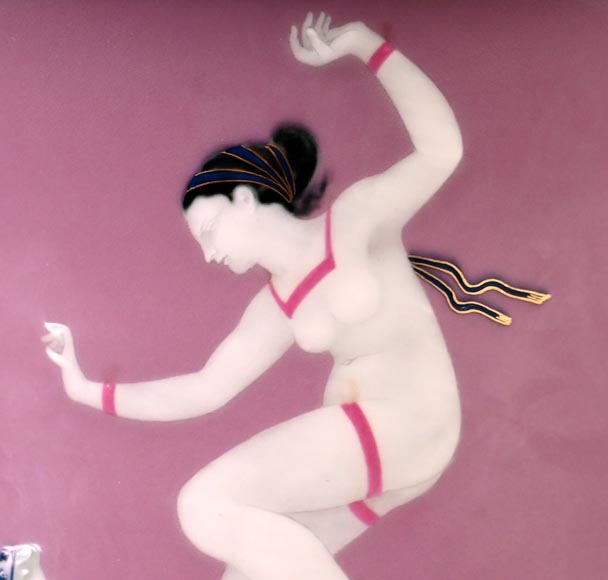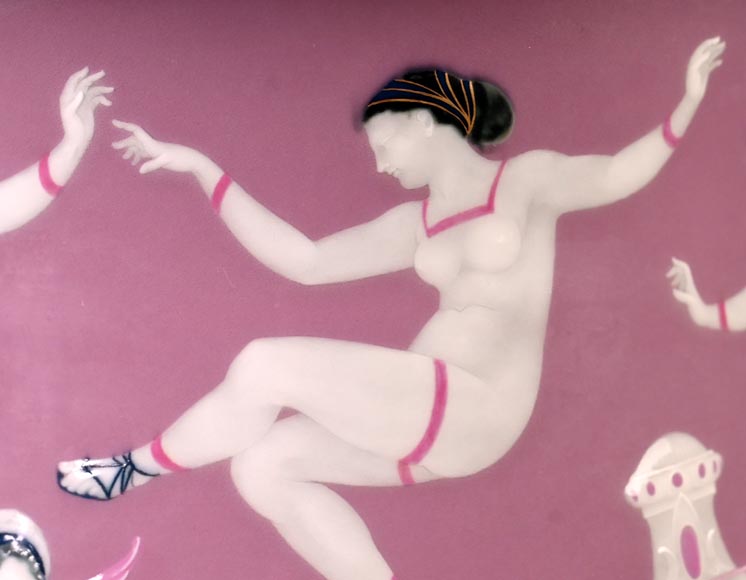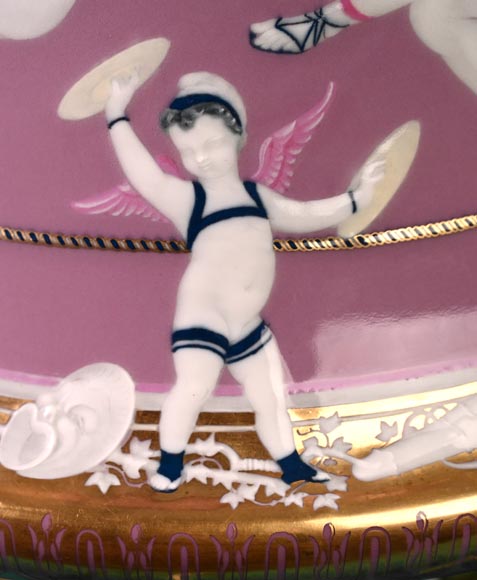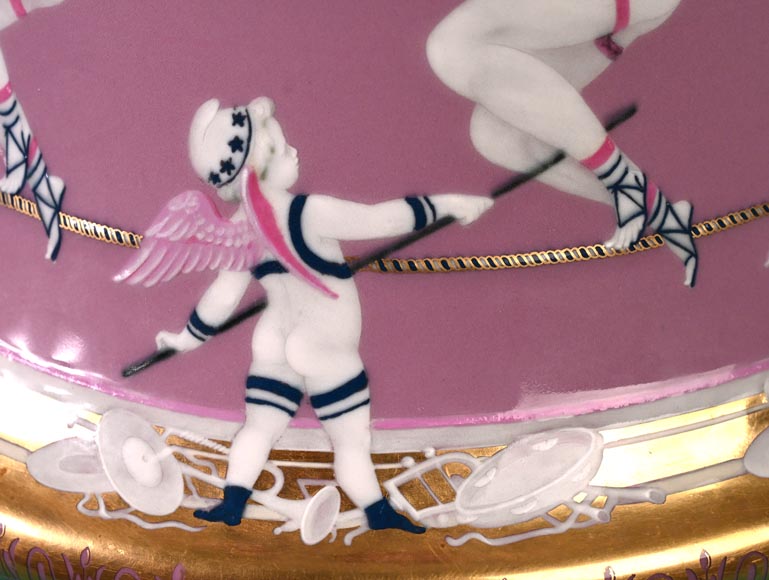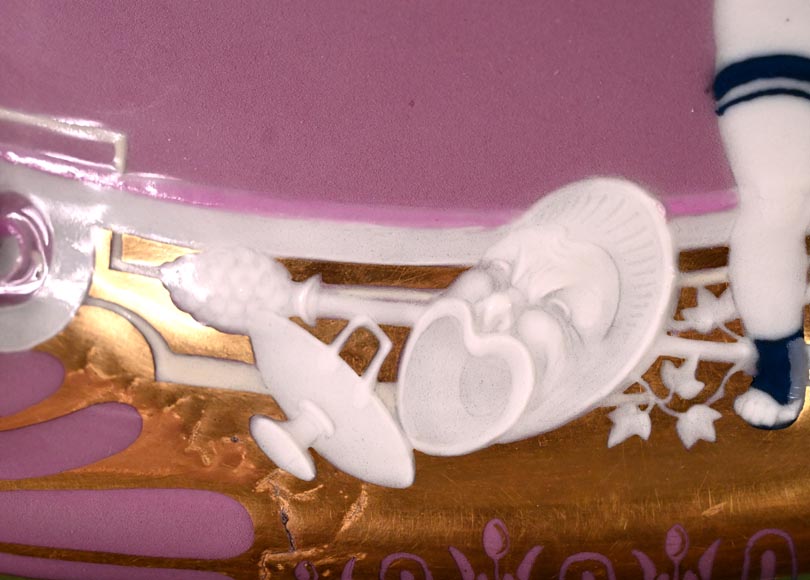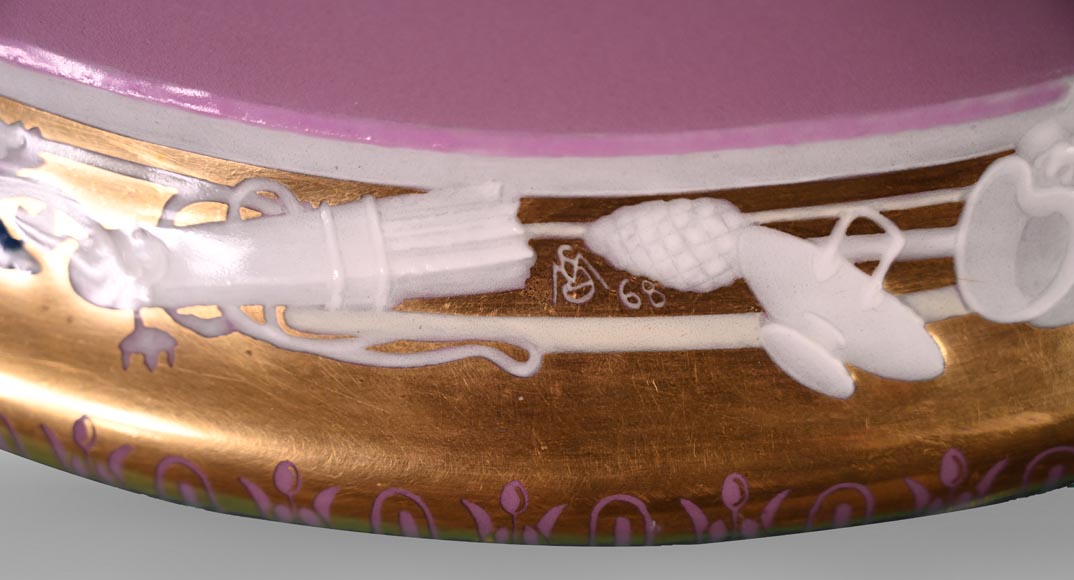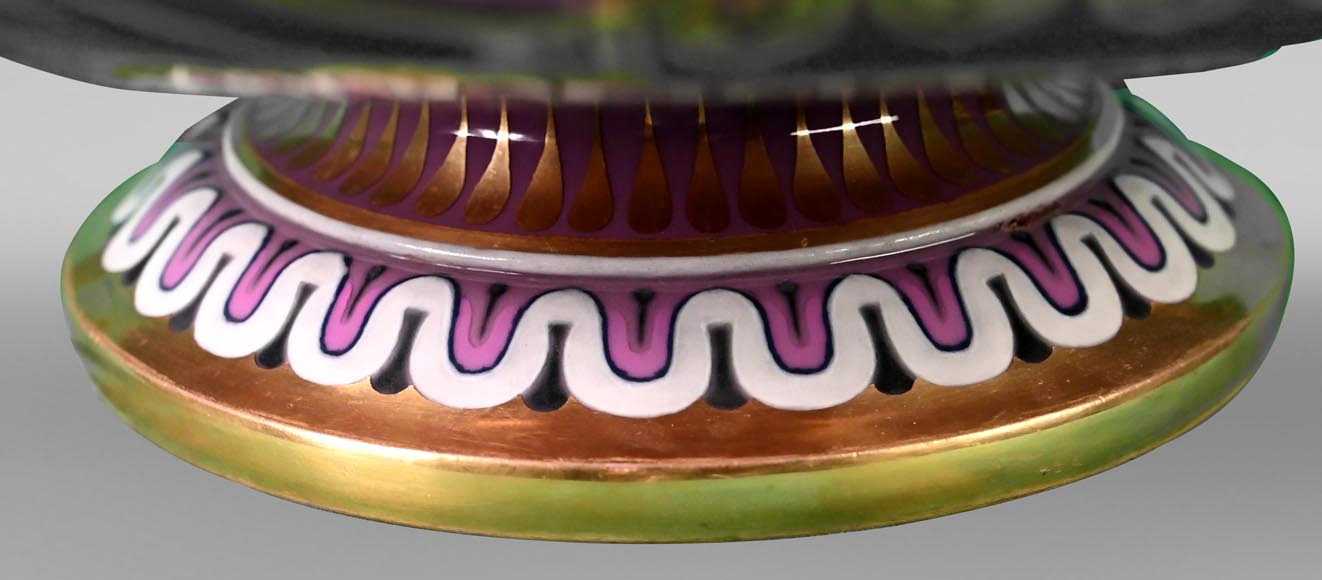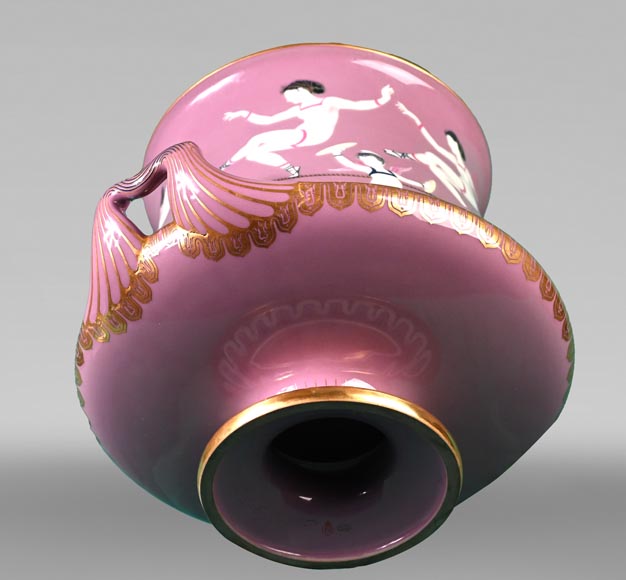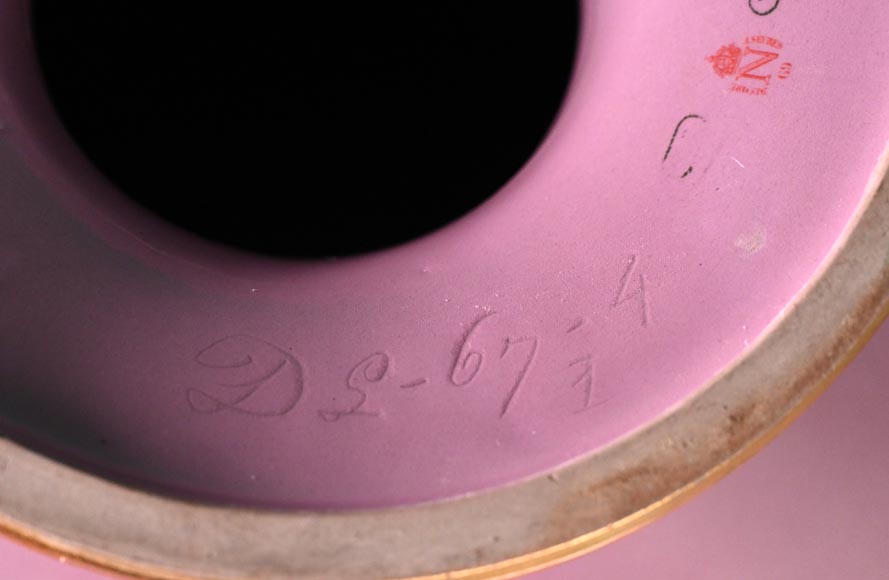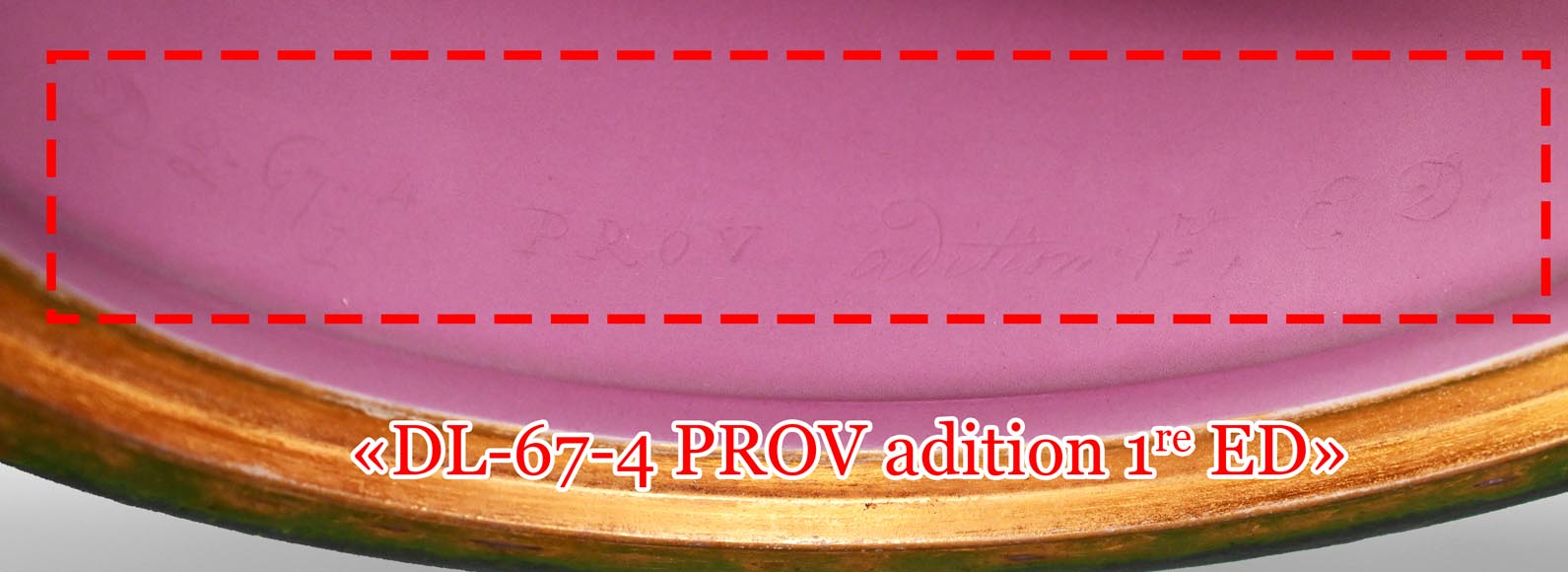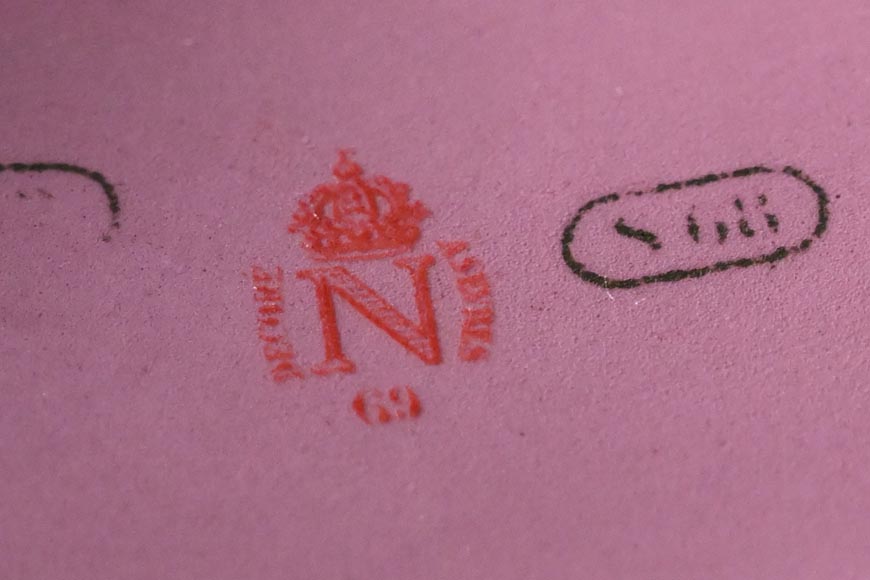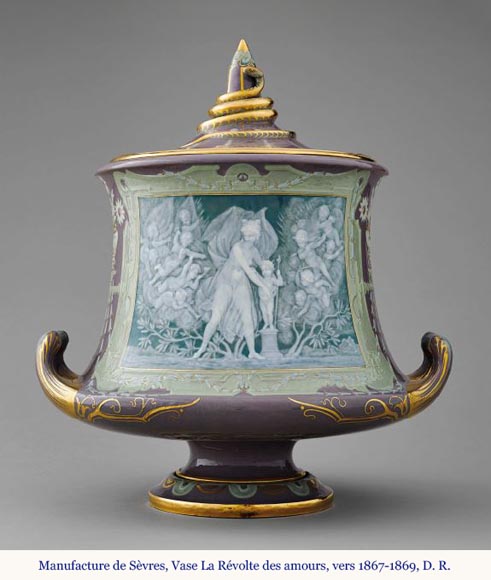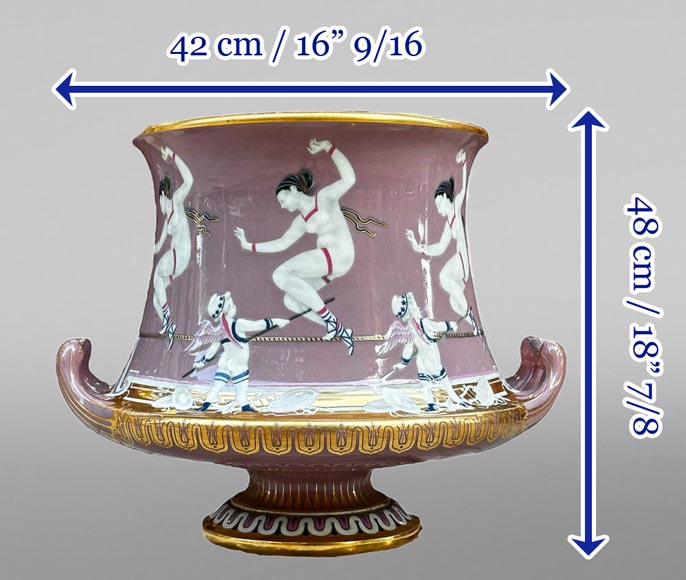Style Other / Ref.15199
Sèvres Manufacture, Cubiform Vase with Tightrope Dancers, 1867-1869
Dimensions
Height 18'' ⅞ 48cm
diameter: 16'' ½ 42cm
Origin:
France
Status:
Good condition
This exceptional vase, of the “cubiform” model with a tightrope dancer motif, was produced at the Sèvres Manufacture between 1867 and 1869.
The shape and decoration of this large vase are inspired by Greek art. It adopts the form of Greek calyx kraters: resting on a relatively low base, its body expands broadly at the bottom, extended by two handles on either side, before tapering concavely and flaring at the top.
The upper part of the vase is adorned with a Greek-style design of tightrope dancers. The same motif is repeated three times: a dancer balances on a rope; on the ground, a putto wearing a Phrygian cap holds up a pole. On the other side, the motif, once again repeated, shows some variations: the positions of the dancers differ slightly, and the putti play cymbals, accompanying the dance. On the ground lie instruments referring to ancient theater and the Dionysian world associated with it: quivers filled with arrows, masks, overturned cups, thyrsi, cymbals, tambourines, as well as trumpets and horns.
The background of the vase, however, is distinctly modern: it is made of a “chameleon” paste, invented in 1848 by Alphonse Louis Salvetat, a chemist at the Sèvres Manufacture, for the 1862 Universal Exposition. It is called so because its lavender color changes depending on the light, shifting from mauve in daylight to bright pink under artificial light.
The pâte-sur-pâte motifs are left in reserve, except for subtly nuanced modeling, enhanced only by a few touches of pink, blue, and black. This limited polychrome also echoes ancient vases, which were generally bicolored. The vase is richly accented with gold; a wide band transitioning between the upper and lower parts of the vase features still-life scenes accompanying the putti and a wide geometric frieze in reserve.
The model of this vase was created within the Sèvres Manufacture in 1866 by sculptor-modeler Nicolle. In total, only three vases of this shape were produced, all around the same time. Only one, ours, is noted as having a tightrope dancer motif, making it a unique piece, completed on April 30, 1869, and sold for 1,600 francs at the time.
The incised marks trace the vase’s early history within the Sèvres workshops. The inscription inside the neck of the vase reads: “DL-67-4 PROV adition 1re ED”. This identifies the turner (who made the circular part of the piece): Antoine-François-Toussaint Delacour (1805-1872), who worked at the Manufacture from 1839 to 1872. The moulder-finisher, responsible for adding the handles, was Eugène Debord (1839-1904), who worked there from 1853 to 1893, first as a turner, then as a moulder-finisher. A review of the 1867 registers confirms this interpretation: Delacour, a “turner of large pieces”, worked on this vase in April, as did Debord. Another incised mark under the base of the vase repeats some of these details, though the finisher is not mentioned this time.
The pâte-sur-pâte figures were executed by Marc Louis Emmanuel Solon (1835-1913), whose easily recognizable mark is visible in the lower part of the vase, reserved within the gilding. This figure sculptor-modeler worked at the Manufacture from 1857 to 1871. The records indicate that he worked on the vase at the end of February 1868, then throughout March and May.
Although his mark is not visible, the records show that the vase’s gilding and ornamentation were carried out by François Hallion, a gilder and decorator who worked at Sèvres between 1865 and 1895, in April 1868.
Finally, the manufacturing and decorative marks of the Manufacture are located under the base of the vase. They indicate the date 1868 for production and 1869 for decoration, along with the Second Empire stamp.
One of the other two vases of the same model, titled La Révolte des Amours (The Revolt of the Cupids), features a large cartouche almost covering the entire surface, depicting a swarm of Cupids attempting to reach little Cupid, perched on a pedestal and protected by his mother, Venus. Though this decoration is also executed in a neo-classical style, it is further removed from the direct inspiration of Greek red- or black-figure vases than the vase with tightrope dancers. It also has a chameleon background, evidence of the popularity of this glaze at the time of these works’ creation.
This second vase shows that the original design included a lid, now missing from our vase. Unfortunately, it is one of the few pieces for which the Sèvres archives do not survive, so it has not been restored.
Nevertheless, the cubiform vase with tightrope dancers remains one of the most exceptional pieces from the Sèvres Manufacture, due to both its rare shape and its decoration combining chameleon paste, rich gilding, and the subtlety of the pâte-sur-pâte figures.
Informations
Price: on request
Recommended for you :
Dimensions:
Width: 16
Height: 35
Depth: 12
Dimensions:
Height: 33
Diameter: 36
Dimensions:
Width: 30
Height: 57
Depth: 23
Dimensions:
Height: 26
Diameter: 36
Dimensions:
Height: 55
Diameter: 24
Dimensions:
Height: 55
Diameter: 22
Dimensions:
Height: 23
Diameter: 9
Dimensions:
Width: 25
Height: 48
Dimensions:
Diameter: 36
Dimensions:
Width: 33
Height: 26
Dimensions:
Diameter: 24
Dimensions:
Height: 5
Diameter: 80



